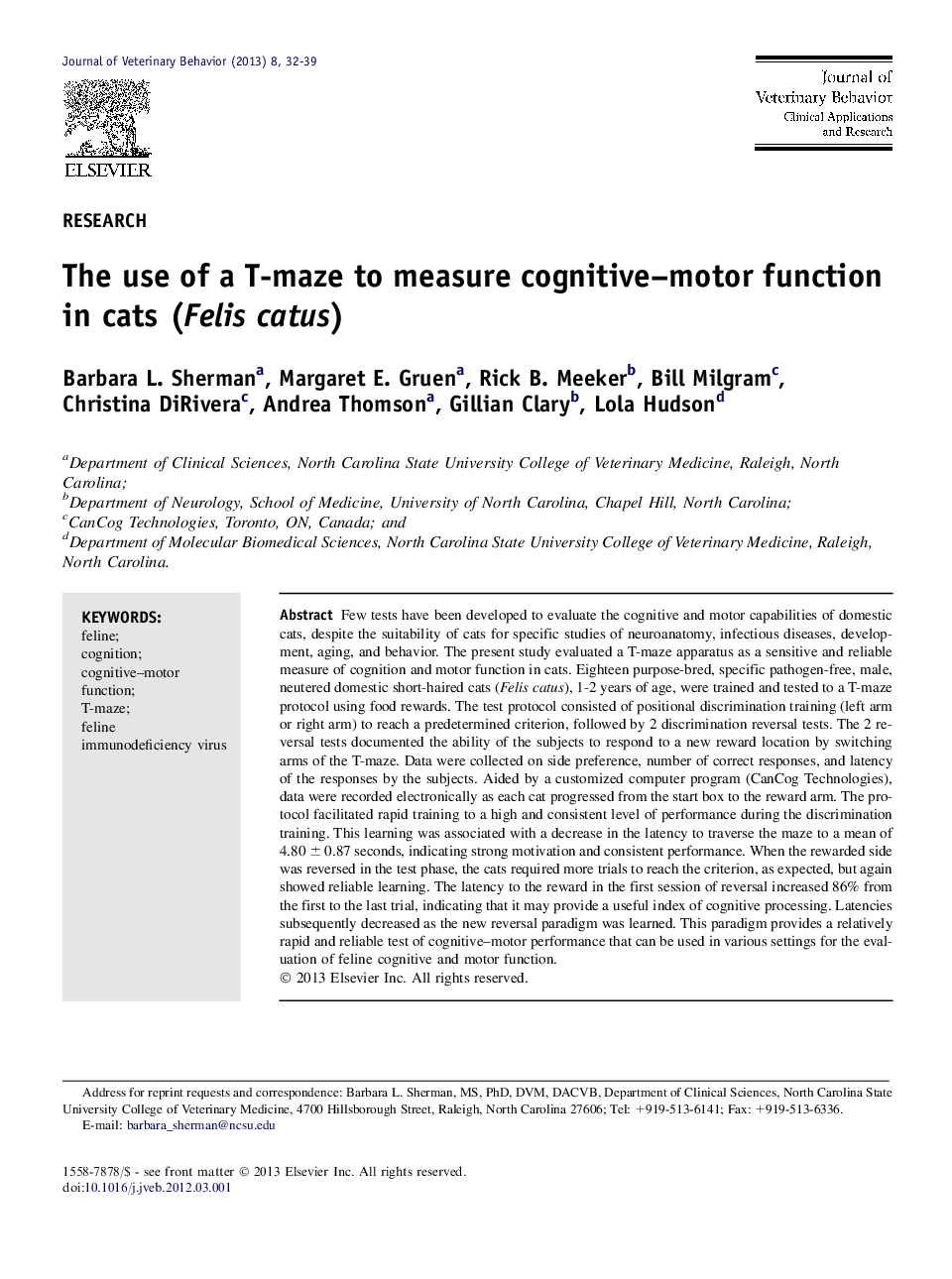| کد مقاله | کد نشریه | سال انتشار | مقاله انگلیسی | نسخه تمام متن |
|---|---|---|---|---|
| 2399691 | 1102049 | 2013 | 8 صفحه PDF | دانلود رایگان |

Few tests have been developed to evaluate the cognitive and motor capabilities of domestic cats, despite the suitability of cats for specific studies of neuroanatomy, infectious diseases, development, aging, and behavior. The present study evaluated a T-maze apparatus as a sensitive and reliable measure of cognition and motor function in cats. Eighteen purpose-bred, specific pathogen-free, male, neutered domestic short-haired cats (Felis catus), 1-2 years of age, were trained and tested to a T-maze protocol using food rewards. The test protocol consisted of positional discrimination training (left arm or right arm) to reach a predetermined criterion, followed by 2 discrimination reversal tests. The 2 reversal tests documented the ability of the subjects to respond to a new reward location by switching arms of the T-maze. Data were collected on side preference, number of correct responses, and latency of the responses by the subjects. Aided by a customized computer program (CanCog Technologies), data were recorded electronically as each cat progressed from the start box to the reward arm. The protocol facilitated rapid training to a high and consistent level of performance during the discrimination training. This learning was associated with a decrease in the latency to traverse the maze to a mean of 4.80 ± 0.87 seconds, indicating strong motivation and consistent performance. When the rewarded side was reversed in the test phase, the cats required more trials to reach the criterion, as expected, but again showed reliable learning. The latency to the reward in the first session of reversal increased 86% from the first to the last trial, indicating that it may provide a useful index of cognitive processing. Latencies subsequently decreased as the new reversal paradigm was learned. This paradigm provides a relatively rapid and reliable test of cognitive–motor performance that can be used in various settings for the evaluation of feline cognitive and motor function.
Journal: Journal of Veterinary Behavior: Clinical Applications and Research - Volume 8, Issue 1, January–February 2013, Pages 32–39